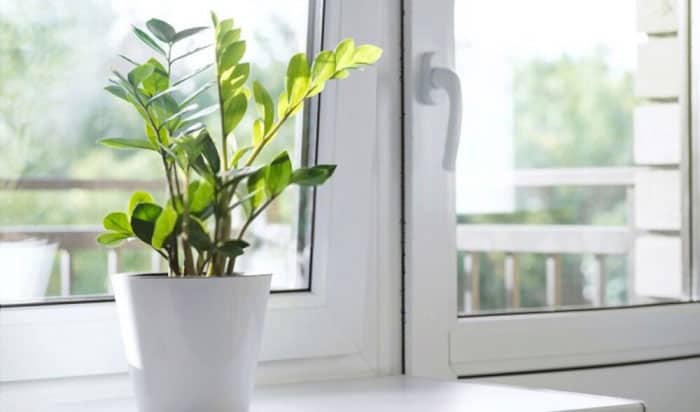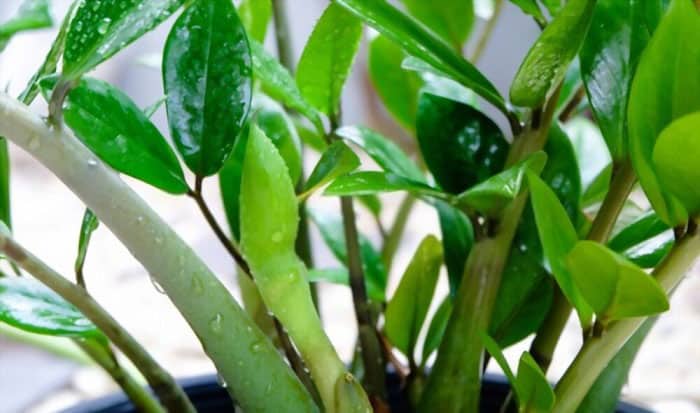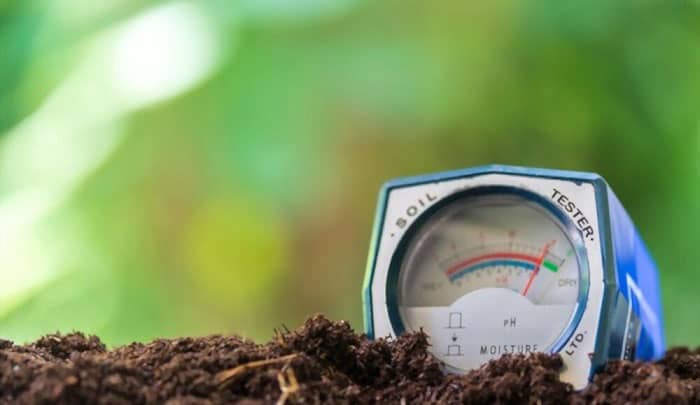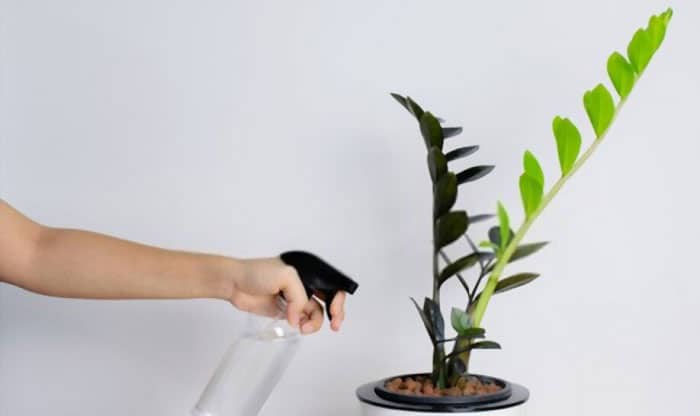Unlike most plants that need regular watering, Zamioculcas Zamiifolia, or the popular ZZ plant, is an easy-to-care-for succulent that can live without frequent irrigation.
In fact, it can thrive without water for two months if it has not developed an established stem yet. However, although ZZ plants have a high tolerance for drought, getting drenched with water is still a requirement for them.
So, when to water ZZ plant? Irrigate this succulent once the soil gets dry or after repotting.
Table of Contents
Water Once the Soil Gets Dry
ZZ plants have a rhizome or horizontal stem responsible for preserving water and relaying it. For this reason, they have less of a need for frequent irrigation.
Although they can endure a less frequent watering schedule, once their soil runs out of moisture, you need to get your hands prepared and hydrate them.
The ZZ plant watering rule is to fill the entire pot from top to bottom. This way, the soil can absorb enough moisture for the plant to soak up.
Following these water requirements will not only refresh ZZ plants. It is also essential for their growth, beauty maintenance, and spreading of nutrients.
However, when you plant a succulent like this, ensure to use a pot with drainage holes at the bottom for proper release of water.
Also, one ZZ plant care tip is to irrigate when there is as little light as possible – preferably, in the early morning until 10 am or from 4 to 6 pm so that the soil dries out less quickly.
Water After Repotting
When the soil dries out is not the only time you should water Zamioculcas plants. Irrigating them after transplanting is also necessary to take care ZZ plant.
As for when to repot ZZ plant, do so once the roots become too large for the container or the rhizomes need more space. And one significant step after transplanting is to water the soil so that ZZ plants have enough moisture.
Also, when repotting or irrigating them, ensure to wear equipment like gloves to protect your hands. Zamioculcas is known to cause skin irritation, after all.
Contrary to the claims that the ZZ plant causes cancer, it doesn’t cause severe illness. If you’re worried about keeping this succulent in your home, there’s no need to be.
Read more: Steps to repot a snake plant.
Test Soil to Determine Water Needs
To care for a ZZ plant more easily, you can check the soi’s moisture level and determine when watering is necessary.
Here’s a sequence of how to test the soil:
- Insert more than half of your finger into the soil to see if it is dry or wet. If the soil is dry, water it immediately.
- Examine and simply feel the bottom of the pot. If it is still wet, there’s no need to irrigate.
- Get a stick and insert it into the soil. If the stick comes out clean when you pull it up, the ground is dry and you need to water the plant.
- Use a moisture meter to test the soil. Just insert it underground and water only if the moisture meter level says so. A range of 4 to 5 means that the soil is still wet, and a scale of 1 to 1.5 means it is dry.
Other Signs Your ZZ Plant Needs Water
Aside from the soil losing its moisture, the plant itself tells us when it needs to get soaked. Here are some signs of dehydration you should look out for.
Dried Tips
The darkened wilted tips of the leaves indicate that the moisture is no longer sufficient. Once the leaves look dry, water immediately.
Leaves have flopped over.
Loss of moisture causes the leaves to bend downward because the plant doesn’t have enough energy to retain its structure. The foliage that flops over tells us we need to hydrate the soil again.
Wrinkled Petioles.
Petioles are stalks that hold the leaves. When they look creased, it means they no longer have enough water to keep themselves healthy and vibrant.
Signs of Overwatering
Although the ZZ plant care instructions include not allowing it to get dehydrated, over-watering is also unideal. Here are the signs you’ve given the plant too much moisture.
Yellow leaves.
Foliage turning yellow shows that the roots got drowned from too much moisture. This is the result of root rot, which prevents nutrients from moving to the leaves.
Pungent smell.
Roots that die because of over-watering will cause the soil to have an unpleasant smell. If you notice that a foul scent is coming out from your plant, it is a sign that something is wrong with the roots.
Dropping plants.
Too much moisture will not only kill the roots, but the base of the plant or the rhizomes can also fail to live when over-watered.
When they die, the rest of the plant will lack proper support and fall over.
FAQS
How often should you water your ZZ plant?
How often to water ZZ plant will depend on your current climate. Watering in summer should happen two times every 4 weeks, since temperatures during this time are higher.
However, in winter, reduce irrigation to only once every 30 days, since the temperature is lower and water will take longer to evaporate.
Should I water my ZZ plant from the bottom?
You can moisturize the ZZ plant from the bottom by filling its container with water. However, this is not the best way to clean the soil of salt.
Therefore, irrigate your plants from the top of the pot if you want to do more than just hydrate them.
How long can ZZ plant go without water?
Even without frequent irrigation, ZZ plants can thrive during dry spells of about three weeks because their rhizomes act as their water reservoir.
Do ZZ plants like to be misted?
Yes. Although they grow best under humid weather and a high temperature of about 75°F, misting them with water can help them thrive through drier environments.
Where is the best place to put ZZ Plant?
The best place to put your ZZ plant after watering or planting is anywhere with the appropriate light requirements.
The ZZ plant sunlight should be indirect. Whether low or bright, the important thing is to place the succulent where there is no direct interaction with the sun to prevent wilting.
Therefore, if you intend to place ZZ pots inside your home, one plant care indoors tip is to lay them at the center of the room rather than on the balcony.
Conclusion
ZZ plants are excellent indoor ornamentals for busy people. Just ensure to water them once the soil gets dry, when their leaves wilt or flop, or if they have creasing stems.
Aside from that, be careful not to overwater them to keep them healthy and free of yellow leaves and undesirable scents.
Also, to keep ZZ plants thriving, hydrate them twice a month during the summer and only once in winter. Hopefully, this post about when to water ZZ plant will help you care for it properly!
Read more: Does a zz plant like to be root bound? And, how to repot it?

Hi, I am William – Floridayards’ digital content creator. My job is to find answers to all your concerns with thorough research and our team’s expert advice. I will also bring you honest reviews on the best products and equipment for raising your beautiful garden. Please look forward to our work!















